The Stone fruit they are a grouping of fruit trees that includes some of the most cultivated tree species ever, both in the hobby and professional fields. In fact, we are talking about trees like peach, plum, apricot, Cherry tree And almond treeall plants of the family of Rosaceaesubfamily Prunoideaegenus Prunus.
The classification as Drupaceae has value in technical-agronomic terms and groups the trees that produce as fruit, precisely, a drupe. It is very important to know how to recognize the buds and branches of this arboreal grouping, since this makes it possible to orient the cultivation operations in a rational way, starting with pruning. So let’s see what are the general characteristics of the buds and branches of the Drupacce, and discover the individual species that are part of it.
The gems of the stone fruit
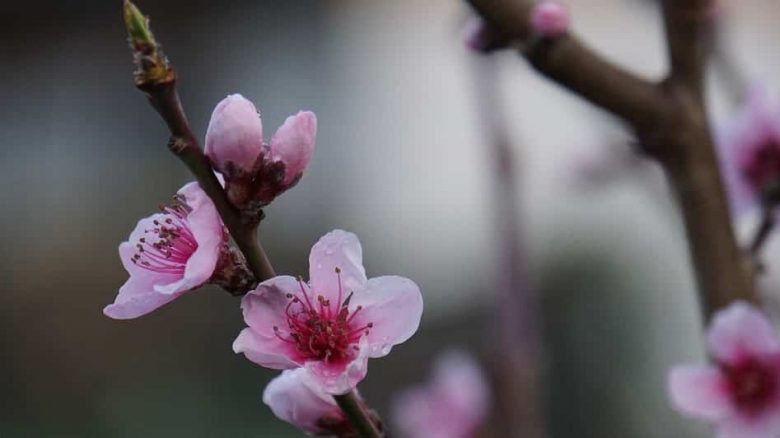
In the Drupaceae the flower buds, that is the reproductive ones, are positioned either laterally on the branches or at the axil of the leaves. However, they are never present at the apex of a branch, where we always find a wood bud.
This feature is important in pruning operations, as it allows you to make shortening cuts on branches with flower buds, without losing production. In the portions of the branch left after cutting, we will leave a certain number of flower buds, so as to have high-quality and high-quality fruits.
Another peculiarity of the gems of the Drupaceae (with the exception of the cherry tree) is the tendency to form gemmary complexes in correspondence with the same node, with a central wood gem and two lateral flower buds.
The branches of the Drupaceae
In stone fruit, therefore, all the branches always have a wood bud in the apical position. In the productive branches, on the other hand, the flower buds are distributed in a lateral position.
The branches are classified according to size, and are distinguished between fruiting branches, mixed branches, brindilli and darts.
Mixed branches
The mixed branches vary in length from 30 to 80 cm and have the ability to differentiate one or more buds from flower in axillary position.
Toast you
The brindilli are thinner branches, 5 to 25 cm long, very important for the production in stone fruit. Mixed brindilli usually have single, woody or flowered axillary buds. There are also vegetative brindilli, which are instead devoid of flower buds.
Darts
The darts are extremely short branches of the Drupacce, in fact they measure from 1 to 5 cm. The fruit darts are called floriferous darts or bunches of May and are characterized by the presence of a sort of crown of flower buds in an apical position, surrounding a central wooden bud. The buds that are instead found in the axillary position of the medium-low portion of the branch, generally, are not well formed.
The dart grows a few millimeters every year, thanks to the activity of the apical wood bud, and reforms a new crown of flower buds. There are also wood darts, devoid of flower buds, rarer and found above all in young plum trees, or in less domesticated species, such as the wild blackthorn. In this type of trees they can end with a sharp apex, similar to a thorn.
Peach
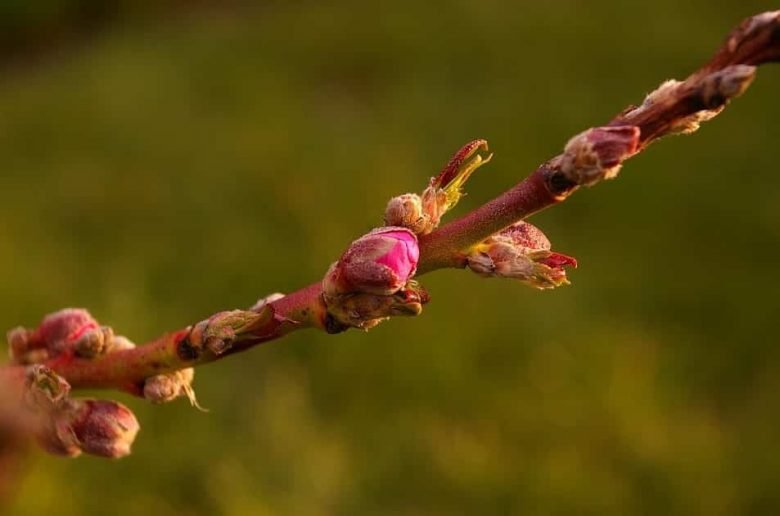
Gems
In the peach tree the buds are typically covered with a thin and thick protective hair. The shape of the flower buds is globular, with only one flower. These buds are found mainly on mixed and brindilli branches (which in the peach tree are 10-20 cm long). Wood gems, on the other hand, are smaller and conical in shape. It is very easy to find the gem complexes, which are composed of a central wood gem and 1-2 lateral flowers.
The flower induction takes place between the end of April and the end of July, with the flower differentiation process being completed in 54-65 days. This period is on average long and favors the formation of a high percentage of flower buds even when, in summer, there are long periods of drought (i climate changes therefore do not play in favor).
The peach tree has little ability to develop latent buds and emit adventitious shoots.
Branches
In the peach tree, the mixed branch can have bud complexes with two or more buds per node in the medium-low part of the branch and single flower buds in the terminal part, formed during the slowdown in spring growth.
The brindillo has single flower buds and usually produces smaller fruit. For this reason it is important to perform fruit thinning.
The darts in the peach tree ripen fruit of good size. But the best productions are obtained on mixed branches of medium vigor. The nectarines are an exception, in which fruiting occurs mainly on mixed brindilli.
Apricot tree
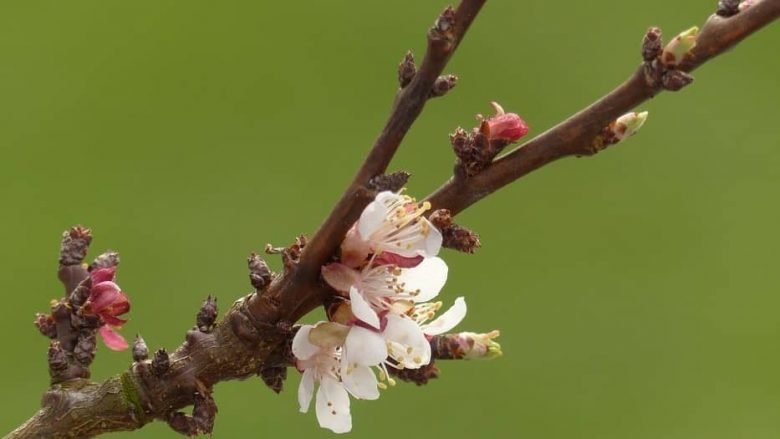
Gems
In the apricot the flower buds have an ellipsoidal shape enlarged at the base, while the wood buds are smaller and conical in shape.
Flower induction takes place mainly in August. This tree has latent buds, but more rarely adventitious ones.
Branches
In the apricot the mixed branch bears flower buds usually in the terminal part.
There may be bud complexes and early productive branches.
The brindillo in the apricot tree can be very short and for this reason it can be confused with the darts. It is characterized by a later flowering than the other branches. The darts, on the other hand, have an excellent percentage of fertility and ripen fruits of good size. Their flowering is early and fruit ripening is delayed.
The best productions are in mixed brindilli and floriferous darts.
Plum
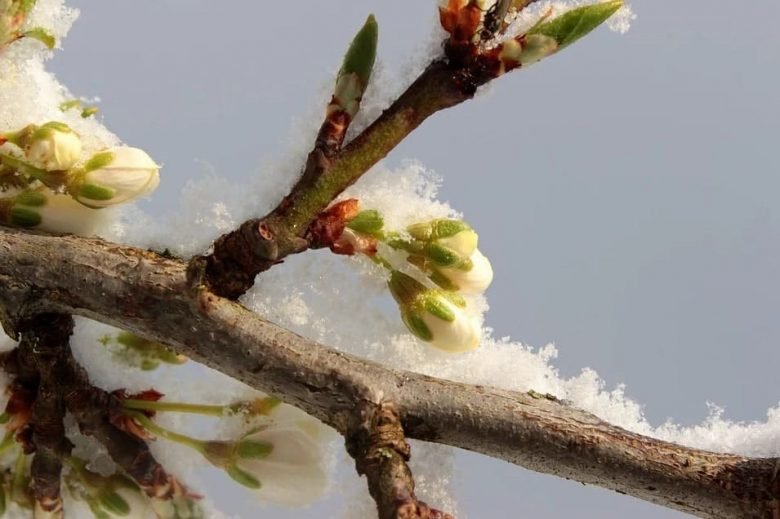
Gems
To recognize plum buds, it is necessary to distinguish between European and Sino-Japanese plum trees. In the former, the flower buds have a pointed ellipsoidal shape, contain 1-2 flowers and are mainly produced on flowering spurs (short branches, 1-2 cm long). In the Sino-Japanese plum trees, on the other hand, the flower buds are globose, contain 3 flowers and are found more on mixed branches.
The wood gems are in both cases pointed in shape. The flower induction takes place starting from June in the European plum tree, in July-August in the Sino-Japanese plum tree.
The long induction period of the European plum tree favors the formation of a high percentage of buds even in unfavorable climatic conditions. In general, the plum tree has latent and adventitious buds.
Branches
In plum trees, mixed branches and brindilli have some flower buds inserted along their axis. The dart, on the other hand, has 5 to 10 flower buds and in the European plum it remains productive for several years.
Most European plum varieties produce fruit mainly on darts, while the Sino-Japanese plum also produces on mixed branches.
Cherry tree
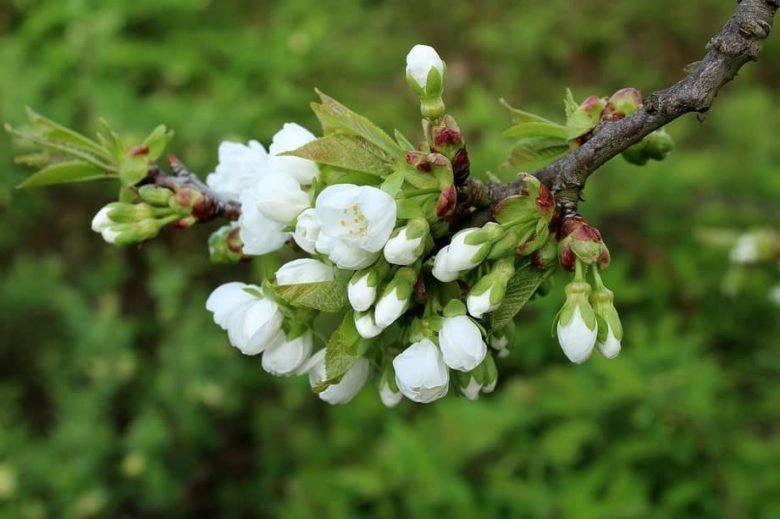
Gems
In the cherry tree, the flower buds have an ellipsoidal shape, with an enlarged basal part. Each bud typically contains 3 flowers. Wood gems are ellipsoidal in shape, but more pointed.
The flower induction takes place in the first part of July.
The cherry tree has little ability to develop latent buds and to emit adventitious shoots.
Branches
In the cherry tree, the mixed branches have few flower buds, inserted in the mid-basal part of the branch. The brindillo also has a few flower buds (no more than 4) in the lower part of the branch. The dart, on the other hand, can also have a dozen flower buds (but only one or two, if inserted on young branches).
Most of the fruit production takes place on spurs or bunches of May, provided that they are not very aged, or too elongated.
Almond tree
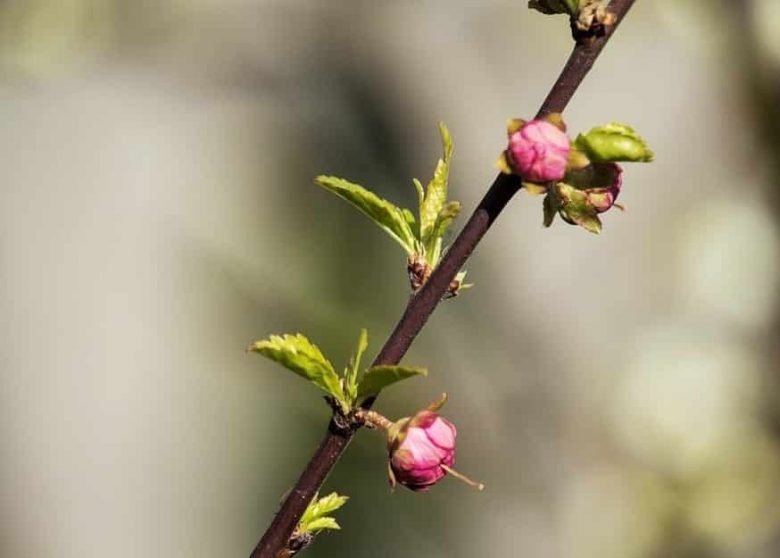
Gems
In the almond tree the flower buds are round in shape and contain solitary flowers or flowers gathered in groups of 2 to 4. The wood buds, on the other hand, are smaller and pointed in shape.
In the almond tree there is the presence of latent and adventitious buds
Branches
In the almond tree, the mixed branch usually produces fruit in younger plants.
The brindillo has some flower buds along the axis. The dart bears the most fruit and remains productive for 5-6 years. In some varieties the production takes place on mixed branches and brindilli.

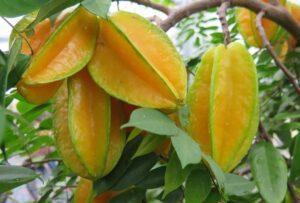
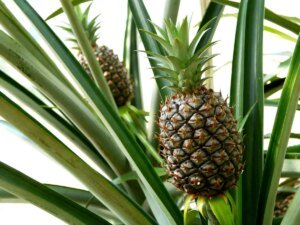
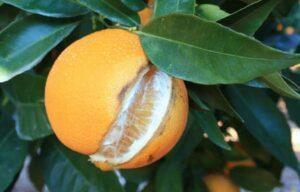
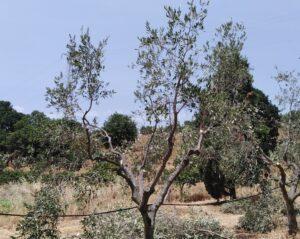
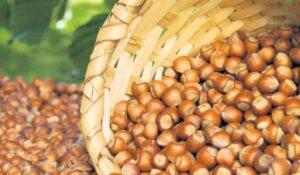
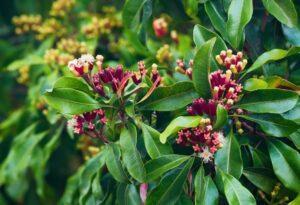
Start a new Thread